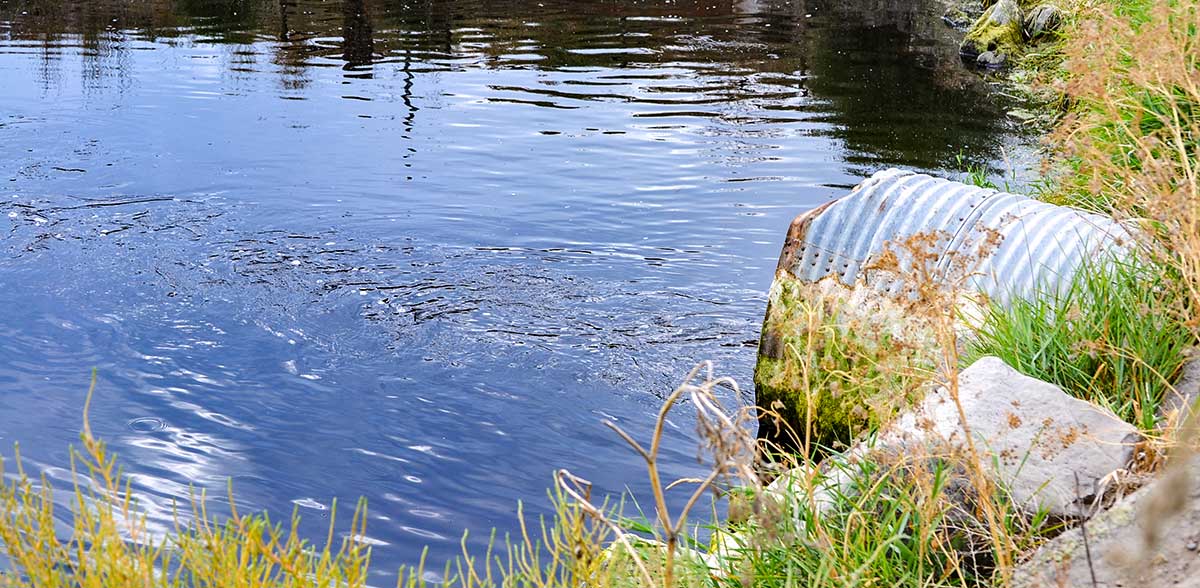
Nov 26, 2021
Big water victory for Lower Klamath
By John Carlson Jr., President
(Originally published in the Winter 2021 issue of California Waterfowl)
The Lower Klamath is the single most important staging area for waterfowl in all of North America.
Water flows from the headgates of the Ady Canal toward the Lower Klamath National Wildlife refuge in September. PHOTO COURTESY OF USFWS
The refuge has experienced a water crisis since the early 2000s, when federal agencies re-prioritized Klamath River water for three endangered fish species: coho salmon, shortnose suckers and Lost River suckers.
Bird populations at Lower Klamath have experienced an accelerated decline since then, and then due to extreme water shortages in 2018, fall duck populations at the refuge were among the lowest ever recorded for that time period. With the region in extreme drought, the situation for the refuge and its wildlife is truly dire.
Earlier this year CWA, with the Herculean efforts of its Klamath Task Force, set out to raise funds to purchase a water right from a private rancher and transfer that water to the Lower Klamath. We knew this unprecedented approach would be difficult to accomplish on several fronts: the cost (a $600,000 down payment), getting a permit from Oregon Water Resources Department, and getting water to the refuge through U.S. Bureau of Reclamation canals.
The great news is that we were able to overcome these hurdles, and in early September, water from this transfer began to flow into the refuge.
We are grateful to so many people: The rancher who agreed to transfer this water right, our donors who made this possible with over $1 million donated to date, the U.S. Fish and Wildlife Service for supporting this effort, the conservation groups that have lent critical support, the Oregon Water Resources Department for approving the transfer and the U.S. Bureau of Reclamation for agreeing to let water pass through its headgates to aid a desperately dry Lower Klamath.
"I am extremely gratified to see water going onto Unit 2 of the Lower Klamath National Wildlife Refuge," said Kurt Thomas, whose family owns Agency Ranch, from which the water right was transferred. "I grew up hunting Tule Lake and Lower Klamath, and transferring our pasture irrigation water to irrigate wetland plants for the benefit of ducks and shorebirds is an extraordinary legacy for my family."
Rob Plath, chairman of CWA's Lower Klamath Refuge Task Force, highlighted the importance of this achievement. "While this amount of water is small compared with the refuge's overall need of about 100,000 acre-feet of water per year, this success is enormously significant," he said. Other water rights holders are interested in transferring their rights to help the refuge; this success shows it can be done.
California Waterfowl is thrilled to have such dedicated and knowledgeable individuals on our Klamath Task Force, because it adds firepower to a fight we have waged for two decades, and we are running out of time to win this battle for the ducks. The health of the Pacific Flyway and California's mallard population depends on a healthy Lower Klamath National Wildlife Refuge.
I am proud to publicly thank each and every one of the members of the California Waterfowl Lower Klamath Refuge Task Force:
- Chairman Rob Plath, former chair and current member of the CWA Board
- Secretary Yancey Forest-Knowles, former chair of the CWA Board
- Victor Gonella, former chair of the CWA Board
- Rocque Merlo, former chair and current member of the CWA Board
- Mike Hoppe, member of the CWA Board
- Chris Dobson, member of the CWA Board
- Greg Dyer, member of the CWA Board
- Mike Sutton, executive director, Goldman Environmental Foundation
- Meghan Hertel, director of land and water conservation, Audubon California
- Ellen Wehr, general counsel, Grassland Water District
- John Carlson Jr., CWA president
- Mark Hennelly, CWA VP for advocacy
- Holly Heyser, CWA communications director
- Caroline Brady, CWA waterfowl programs supervisor
- Special advisor: Congressman Doug LaMalfa
The challenges of securing an adequate and permanent water supply for Lower Klamath are far from over, but let’s take a moment to celebrate this historic accomplishment! Take care and have a great season,
John Carlson


